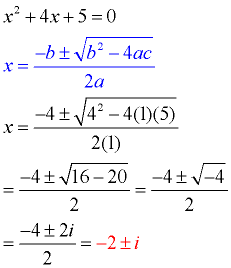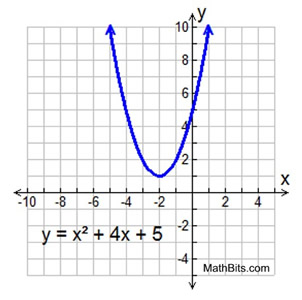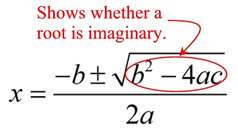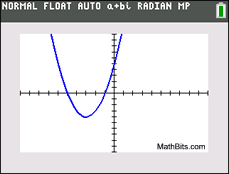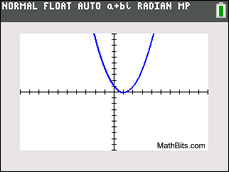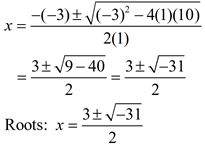Find the Complex Solutions of the Equation
| See Quadratic Formula for a refresher on using the formula. In Algebra 1, you found that certain quadratic equations had negative square roots in their solutions. Upon investigation, it was discovered that these square roots were called imaginary numbers and the roots were referred to as complex roots. Let's refresh these findings regarding quadratic equations and then look a little deeper.
Consider this example:
The complex roots in this example are x = -2 + i and x = -2 - i. These roots are identical except for the "sign" separating the two terms. One root is -2 PLUS i and the other root is -2 MINUS i. Roots that possess this pattern are called complex conjugates (or conjugate pairs). This pattern of complex conjugates will occur in every set of complex roots that you will encounter when solving a quadratic equation. When expressed as factors and multiplied, these complex conjugates will allow for the middle terms containing "i "s to cancel out. If the roots of a quadratic equation are imaginary,
If the discriminant is negative, you have a negative under the radical The discriminant, b 2 - 4ac , offers valuable information about the "nature" of the roots of a quadratic equation where a, b and c are rational values. It quickly tells you if the equation has two real roots (b 2 - 4ac > 0), one real repeated root (b 2 - 4ac = 0) or two complex conjugate roots (b 2 - 4ac < 0). If you are trying to determine the "type" of roots of a quadratic equation (not the actual roots themselves), you need not complete the entire quadratic formula. Simply look at the discriminant.
NOTE: The re-posting of materials (in part or whole) from this site to the Internet is copyright violation | ||||||||||||||||||||
Find the Complex Solutions of the Equation
Source: https://mathbitsnotebook.com/Algebra2/Quadratics/QDQuadratics.html
